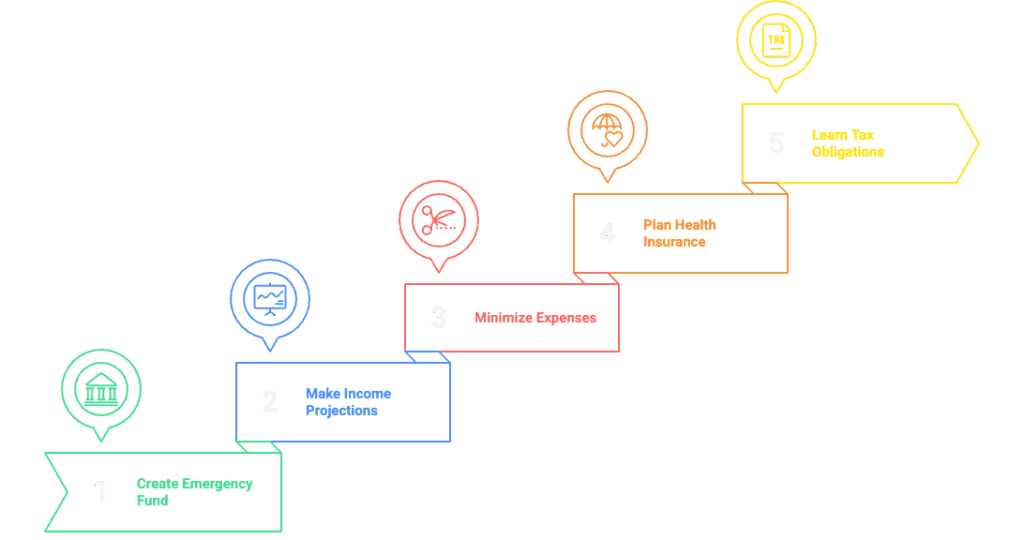Table of Contents
- 1. Side Job Culture and Importance
- 2. Determining the Right Time for Full-Time Transition
- 3. Financial Preparation and Security Strategies
- 4. Time Management and Work Balance
- 5. Successful Transition Stories
- 6. Points to Consider During the Transition Process
- 7. Conclusion: Transformation from Side Job to Career
1. Side Job Culture and Importance
Today, the concept of side job has become an important part of professional life, going beyond just earning extra income. Many professionals start side projects while maintaining their current jobs to discover their own passions, gain new skills, or diversify their income sources.
A side job also functions as a safety net. In periods of increasing economic uncertainty, not being dependent on a single income source is a smart strategy. Additionally, a side job offers you a laboratory where you can test your entrepreneurship ideas and make experiments without taking risks.
The opportunities offered by the digital age have exponentially increased the potential of side jobs. Areas such as e-commerce, online education, consulting, content production, and software development offer high-potential opportunities that can be started with low capital. This strengthens the possibility of side jobs turning into full-time careers.
2. Determining the Right Time for Full-Time Transition
The most critical decision in turning your side job into a full-time career is the timing of the transition. Before making this decision, you need to look at some concrete indicators.
The first indicator is financial stability. If your side job income has reached at least 80 percent of your current salary for at least six months, this can be a transition signal. However, this is just an average; your personal expenses, responsibility level, and risk tolerance can change this ratio.The second indicator is demand continuity. Is the demand for your side job regular and predictable? Or is it seasonal or coincidental? If you have a continuous customer base and are making repeat sales, this shows that your business model is solid.
The third indicator is time pressure. If your side job is growing but you are missing opportunities due to your full-time job, this can be a turning point. The situation of not being able to meet customer demands or rejecting projects shows that you need to consider a full-time transition.
3. Financial Preparation and Security Strategies
Being financially prepared before making a full-time transition is critically important. This preparation should include the following steps:
- Create an Emergency Fund: Accumulate a fund that will cover at least 6-12 months of your living expenses. This provides a safety net against income fluctuations.
- Make Income Projections: Analyze the last 6-12 months of income data from your side job. Examine the growth trend, seasonal changes, and average income.
- Minimize Expenses: Review your personal and business expenses during the transition period. Improve cash flow by cutting unnecessary spending.
- Plan Health Insurance and Benefits: Identify the benefits you will lose when you leave your current job and find alternative solutions for them.
- Learn Tax and Legal Obligations: Understand your tax obligations as a freelancer or entrepreneur and budget accordingly.

4. Time Management and Work Balance
While growing your side job while maintaining your full-time job requires a difficult balance. There are some strategies for succeeding in this balance.
Priority management is critical. Dedicate certain hours each day to your side job and make this time sacred. Early morning hours or late evening hours are productive working times for many side entrepreneurs. What matters is consistency.
Benefit from automation. Save time by automating repetitive tasks such as email marketing, social media sharing, and customer management. These tools allow you to grow your business without needing to work 24 hours.
Outsourcing is also a smart strategy. Delegating tasks outside your expertise to freelancers or agencies directs you to focus on your main work. You can get external support for tasks such as graphic design, accounting, or content writing.
5. Successful Transition Stories
Real-life examples show that this transition is possible and how it is achieved.
Sara Blakely developed the Spanx idea in the evenings while selling fax machines. She produced the first prototype using her $5,000 savings. When stores started buying her product, she quit her job. Today, Spanx is a billion-dollar brand and Blakely is one of the first women to become a self-made billionaire.
Pat Flynn was working as an architect when he lost his job. However, an online exam guide he prepared as a side project was providing passive income. To repeat this success, he founded the Smart Passive Income blog and podcast. Today he inspires millions of entrepreneurs and teaches passive income strategies.
6. Points to Consider During the Transition Process
It is important to avoid some common mistakes when making a full-time transition.
Stay away from sudden decisions. Instead of emotional decisions, do data-based planning. Regularly measure your side job’s performance and define your goals clearly.
Don’t burn bridges. If possible, leave your current job on good terms. Maintain your professional relationships because this network can become customers or partners for you in the future. Some entrepreneurs try working part-time first instead of a full-time transition.
Don’t depend on a single customer. If a large portion of your side job income comes from a single customer, this carries risk. Reduce this risk by diversifying your customer portfolio.
Get professional support on legal and financial matters. Getting expert opinion on matters such as company establishment, tax planning, and contracts prevents major problems in the future.
Continue to develop yourself. Don’t stop learning even after becoming a full-time entrepreneur. Follow industry trends, gain new skills, and expand your network.
7. Conclusion: Transformation from Side Job to Career
Turning your side job into a full-time career requires courage, planning, and discipline. However, with the right strategies, this transition offers a unique opportunity for financial freedom and personal satisfaction.
The key to successful transformation is not rushing and building each step on solid foundations. Ensure financial security, validate market demand, and take action at the right time.
Remember, the project you see as a side job today can be your successful business of tomorrow. Many global brands and successful entrepreneurs have gone exactly this way. You too can realize this transformation with patience, strategy, and determination.
Every great success begins with a small step. Your side job can be that first step.




